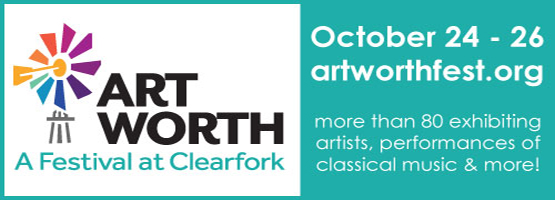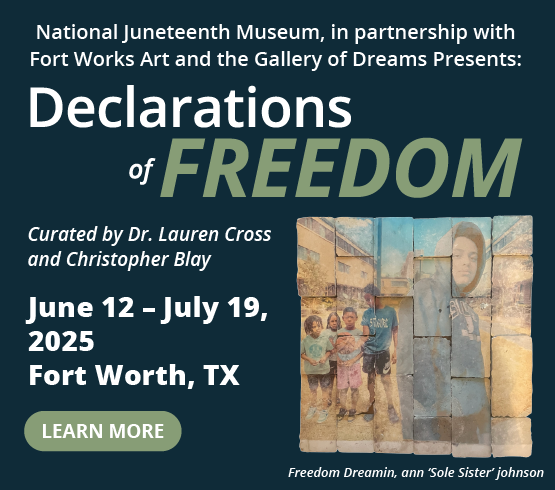Robert Motherwell: Pure Painting, on view at the Modern Art Museum of Fort Worth from June 4 to Sept. 17, is the first presentation in over 25 years to survey the life and work of the influential post-war artist, whose paintings have been recognized as some of the most inventive of his time.
Motherwell (1915-1991) moved from California to New York in 1940, where he studied under Meyer Shapiro at Columbia University. Although his artistic career includes printmaking and collage, in short, a trip to Mexico in 1942 with artist Roberto Matta prompted Motherwell to devote himself to painting and solidified his engagement with both Surrealism and Abstract Expressionism.
The Surrealist practice of psychic automatism (suppressing conscious control in the creative process) was important to Motherwell, as it was to other first-generation Abstract Expressionist artists. The practice, which André Breton linked to a “pure” state of expression, enabled Motherwell to create a wide range of compositions, some variations of which he returned to throughout his life, such as the rough columnar and orbital forms of his monumental Elegy to the Spanish Republic.
With Pure Painting, Davidson, who is considered an authority on Surrealism, Abstract Expressionism, and Pop Art, hopes to “shine a new light on Motherwell’s practice as a painter and as a thinker, and as somebody who truly shaped the way the second half of painting occurred in the United States.” Motherwell is described as the leading spokesperson for avant-garde art, and in addition to his practice as a painter, he was an educator, lecturer, and writer. Prior to his time at Columbia, he studied philosophy and literature, and in the 1940s he was involved with the Surrealist magazine VVV and the journal DYN. Later, he taught at Hunter University and Black Mountain College, directed the groundbreaking Documents of Modern Art Series, edited The Dada Painters and Poets: An Anthology, and more.
Today Motherwell’s legacy continues through the Dedalus Foundation, which he created in 1981 and which was instrumental in building the Modern’s collection of 72 of the artist’s works, some of which are on view for Pure Painting. After its run at the Modern, the show will travel to the Kunstforum Vienna from October 2023 to January 2024.
Davidson explains, “The show takes us from the beginning of Motherwell’s career right through to the end in 1991, beginning with his early work in kind of a surrealist, automatist manner, right through to the Hollow Men series he was working on toward the end of his life. Throughout, visitors will have the opportunity to experience the arc of the Elegy to the Spanish Republic paintings.” The elegies, which Motherwell began in 1948, comprise his most widely recognizable compositions.
Pure Painting includes what Davidson refers to as “punctuations” about particular moments in Motherwell’s life that affected how he started to make pictures and what concerned him at the time. “The overarching thread is his deep engagement with humanity often expressed on a monumental scale,” she says.

1 ⁄6
Robert Motherwell
The Homely Protestant, 1948
Oil and casein on Masonite
97 ¾ x 48 ¼ in.
The Metropolitan Museum of Art. Gift of the artist. © Copyright 2023 Dedalus Foundation, Inc. / Licensed by the Artists Rights Society (ARS), NY.

2 ⁄6
Robert Motherwell
The Garden Window, 1969/1990
Acrylic and charcoal on canvas
60 ¼ x 40 1/8 in.
Collection of the Modern Art Museum of Fort Worth. Museum purchase, the Friends of Art Endowment Fund. © Copyright 2023 Dedalus Foundation, Inc. / Licensed by the Artists Rights Society (ARS), NY.

3⁄ 6
Robert Motherwell
Two Figures with Cerulean Blue Stripe, 1960
Oil on canvas
84 x 109 ¼ in.
Private collection. Courtesy Locks Gallery, Philadelphia. © Copyright 2023 Dedalus Foundation, Inc. / Licensed by the Artists Rights Society (ARS), NY.

4 ⁄6
Robert Motherwell
Summer Open with Mediterranean Blue, 1974
. Acrylic and charcoal on canvas
48 1/8 x 108 1/8 in.
Collection of the Modern Art Museum of Fort Worth. Museum purchase, the Friends of the Art Endowment Fund. © Copyright 2023 Dedalus Foundation, Inc. / Licensed by the Artists Rights Society (ARS), NY.

5 ⁄6
Robert Motherwell
Elegy to the Spanish Republic, ca. 1962/1982
Magna and acrylic on canvas
72 x 96 in.
Collection of the Modern Art Museum of Fort Worth. Museum purchase, the Friends of Art Endowment Fund. © Copyright 2023 Dedalus Foundation, Inc. / Licensed by the Artists Rights Society (ARS), NY.

6 ⁄6
Robert Motherwell
Face of the Night (For Octavio Paz), ca. 1977-79/1981
. Acrylic on canvas
72 x 180 in.
Collection of the Modern Art Museum of Fort Worth. Museum purchase, the Friends of Art Endowment Fund. © Copyright 2023 Dedalus Foundation, Inc. / Licensed by the Artists Rights Society (ARS), NY.
Motherwell embedded meaning and emotion in forms and colors, and combinations thereof, which he pursued throughout his career. As Jonathan Fineberg wrote in Artforum in 1978, “as an object, each of Motherwell’s paintings intentionally embodies both a psychological experience and the artist’s active struggle to translate it into visual metaphor.” Further, the artist’s titles imbue his abstract imagery with connections to the physical world, often evoking a place or feeling about or in a place.
Davidson is also interested in Motherwell’s “knowledge of literature and his concerns about some of the atrocities occurring in the world in the time in which he was living. He felt a responsibility to capture his concern in paint.” Pure Painting presents an opportunity to consider Abstract Expression in more personal ways, informed by the artist’s own belief that art should reflect the complexity of one’s inner being, and that all aesthetic decisions were ultimately ethical.
—NANCY ZASTUDIL





